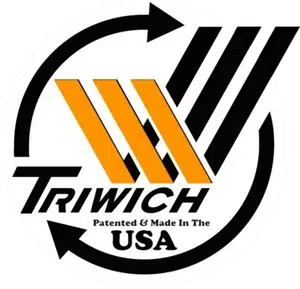Did you know that transportation costs can eat up to 60% of a company’s supply chain expenses? To stay competitive, businesses must implement effective transportation cost reduction strategies. By optimizing routes, leveraging technology for real-time tracking, and consolidating shipments, companies can significantly cut down on expenses. These strategies not only lead to cost savings but also improve efficiency and reduce carbon footprint. In this post, we will delve into proven methods that can help businesses streamline their transportation operations and boost their bottom line.
Key Takeaways
- Implementing efficient strategies like optimizing routes and consolidating shipments can significantly reduce transportation costs.
- Leveraging technology such as transportation management systems can streamline operations, track performance metrics, and identify cost-saving opportunities.
- Negotiating carrier contracts with clear terms, volume commitments, and performance incentives can lead to cost reductions and improved service levels.
- By applying a combination of these strategies, businesses can proactively manage and reduce their transportation costs while improving overall operational effectiveness.
- Regularly reviewing and adjusting cost reduction strategies based on changing market conditions and business needs is crucial for sustained savings and competitiveness.
Effective Strategies for Cost Reduction
Optimize Route Planning
Analyzing traffic patterns helps identify the most efficient routes for transportation, reducing time and fuel costs. Utilizing software tools enables companies to simulate various routing scenarios, optimizing for cost efficiency. Adjusting routes dynamically based on real-time conditions further enhances savings potential.
Consolidating shipments involves combining multiple shipments into a single load, reducing handling and transportation costs. Scheduling regular consolidation periods helps maximize efficiency by minimizing empty space in vehicles. Effective communication with suppliers to align shipment schedules is crucial for successful shipment consolidation.
Consolidate Shipments
- Combine multiple shipments into a single load to reduce costs.
- Schedule regular consolidation periods to maximize efficiency.
- Communicate with suppliers to align shipment schedules.
Leverage Intermodal Solutions
Exploring combinations of different transportation modes can lead to significant cost savings. Assessing the benefits of using rail for long-distance transport offers opportunities for efficiency and cost reduction. Evaluating local trucking options to connect intermodal hubs ensures seamless integration of transportation modes.
- Pros of Consolidating Shipments:
- Reduced transportation costs.
- Enhanced efficiency in logistics operations.
- Benefits of Leveraging Intermodal Solutions:
- Diversified transportation options.
- Increased flexibility in supply chain management.
Role of Technology in Cost Reduction
Implement Automation Tools
Introducing automation tools is crucial for streamlining logistics processes efficiently. By automating tasks such as order processing and inventory management, companies can significantly reduce operational costs. Predictive analytics play a key role in anticipating demand fluctuations, allowing businesses to adjust their resources accordingly. This proactive approach leads to optimized operations and cost savings.
Automated systems also help in minimizing manual errors by automating data entry and tracking processes. This not only enhances accuracy but also improves overall efficiency. With the elimination of human errors, companies can avoid costly mistakes that may impact their bottom line. Embracing automation tools is a strategic move towards achieving cost reduction goals effectively.
Use Transportation Management Systems
Transportation Management Systems (TMS) offer a centralized platform for managing all transportation-related data. By consolidating information such as freight costs, carrier performance, and shipment tracking, companies can make informed decisions to optimize their transportation operations. Monitoring key performance indicators through TMS enables businesses to identify areas for improvement and implement corrective measures promptly.
Integrating TMS with existing supply chain management systems enhances visibility and control over the entire logistics network. This integration facilitates seamless coordination between different departments, leading to improved communication and collaboration. By leveraging TMS capabilities, organizations can enhance operational efficiency and achieve significant cost reductions in their transportation processes.
Track with GPS Technology
Utilizing GPS technology for vehicle tracking offers real-time visibility into fleet operations. By monitoring vehicle locations continuously, companies can ensure efficient route planning and scheduling. Analyzing GPS data helps in evaluating route efficiency and optimizing delivery times, leading to enhanced customer satisfaction and cost savings.
Implementing alerts based on GPS data allows companies to proactively address deviations from planned routes or delays. By receiving instant notifications about any unexpected events or disruptions, businesses can take immediate actions to mitigate risks and maintain service levels. GPS technology serves as a valuable tool in enhancing operational agility and driving cost-effective transportation strategies.
Negotiating Carrier Contracts
Understand Carrier Rates
Research and compare rates from various carriers to ensure competitiveness. Look for fluctuations in pricing based on market trends. Identify any hidden fees or surcharges that may impact overall transportation costs. Negotiate for favorable rates by leveraging shipping volume and consistency with carriers.
Analyze Contract Terms
Review carrier contracts thoroughly to understand the insurance coverage and payment conditions. Look for flexibility in pricing structures and scalability options. Identify any clauses that could potentially result in unexpected costs or penalties. Ensure compliance with service level agreements (SLAs) to avoid additional charges.
Build Strong Relationships
Foster transparent communication channels with carriers and suppliers to maintain a healthy working relationship. Establish trust through consistent interactions and prompt issue resolution. Collaborate on joint initiatives to streamline processes and enhance operational efficiency.
How TriWich Products Contribute to Cost Reduction:
Modular Dolly Systems
TriWich’s modular dolly systems, such as the Tri60 Universal Dolly and Wheel Dollies, offer customizable solutions. These products can adapt to various transportation needs, eliminating the requirement for multiple types of equipment. By using these modular systems, companies can streamline their operations and reduce costs associated with purchasing and maintaining different transportation tools.
Efficient Cargo Handling
TriWich’s equipment facilitates efficient cargo handling, especially when it comes to moving heavy machinery and containers. The design of their products enables smoother and quicker loading and unloading processes. This efficiency leads to faster turnaround times for transportation tasks, ultimately reducing labor costs. Companies benefit from increased productivity and reduced operational expenses by incorporating TriWich’s equipment into their logistics processes.
Durability and Longevity
One key factor contributing to cost reduction is the durability and longevity of TriWich products. These items are constructed using high-quality materials that ensure robustness and resilience. By investing in durable equipment, companies can minimize maintenance requirements and prolong the lifespan of their transportation tools. This translates to lower replacement costs over time, making TriWich products a cost-effective choice for businesses aiming to optimize their transportation operations.
Closing Thoughts
In implementing effective strategies, leveraging technology, negotiating contracts, and utilizing products like TriWich, you can significantly reduce transportation costs. By optimizing your approach, you can enhance efficiency and cut down on unnecessary expenses. Remember, staying informed about industry trends and continuously refining your cost-saving techniques will keep you ahead in the competitive transportation landscape.
Take charge of your transportation cost reduction journey today. Implement these strategies, embrace technological advancements, and make informed decisions to drive down costs effectively. By applying these insights, you can streamline operations, boost savings, and achieve long-term success in managing transportation expenses.
Frequently Asked Questions
What are some effective strategies for reducing transportation costs?
Effective strategies include optimizing routes, consolidating shipments, using intermodal transportation, implementing fuel-efficient practices, and leveraging technology for real-time tracking and monitoring.
How does technology play a role in reducing transportation costs?
Technology helps in optimizing routes, providing real-time tracking, improving fleet efficiency, analyzing data for cost-saving opportunities, and enhancing communication between stakeholders for streamlined operations.
Why is negotiating carrier contracts important for cost reduction?
Negotiating carrier contracts can lead to better rates, improved service levels, reduced accessorial charges, increased flexibility in shipping options, and long-term partnerships that benefit both parties.
How do TriWich Products contribute to reducing transportation costs?
TriWich Products offer innovative packaging solutions that reduce dimensional weight charges, optimize space utilization in shipments, enhance product protection to minimize damages, and streamline handling processes for cost-effective logistics operations.

